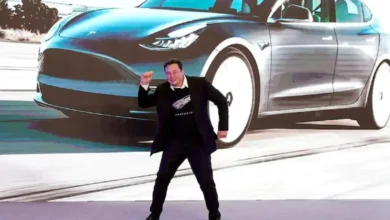Driving with Traction Control System

The traction control system (TCS) is one of the most important safety features of modern cars. It prevents wheelspin during acceleration by reducing the amount of torque applied to the drivetrain. That reduces the risk of losing traction and spinning out.
In addition to preventing loss of traction, it helps reduce fuel consumption and emissions. The traction control system (TCS) is one of the most common electronic stability control devices in passenger cars today. This device helps to reduce wheel slip during hard acceleration.
It works by sending less power to the wheels that are spinning faster than the others. If you want to know more about it, check out our article here.
If you’re looking for a way to turn your vehicle into cash, remember that you can always cash your car in UAE for a fair price!
How Does it Work?
Traction control is an electronic feature that monitors how much power is being transferred to each wheel on your car. The computer uses this data to determine if any wheel is slipping or spinning too fast. If so, it will slow down the engine output to that wheel until the wheel stops spinning.
That helps prevent the “wheel spin,” in which a wheel loses traction and spins uncontrollably. When this happens, the entire vehicle loses traction and may begin to slide.
If you’ve ever driven in mud, you’ve probably noticed that when a wheel spins, the rest of the vehicle tends to follow along. That’s because the friction between the ground and the tires causes all four tires to rotate together.
If only one wheel slips, the other three still rotate around their axes. As a result, they aren’t pulling the rest of the car forward. Instead, the whole car begins to slide backward.
Cars in optimal condition have a high resale value, which is why it’s essential to maintain your vehicle before preparing for car trade in Dubai.
Traction vs. Stability Control
Stability control is an advanced driver-assist system that keeps your car steady and moving in the direction it intends. It works with the sensors in the front and rear axles to detect whether the car is moving properly or not. If there are problems, stability control helps prevent rolling over or veering off course.
Traction control prevents wheels from spinning too much, causing loss of traction. That happens when one wheel loses contact with the road surface and spins uncontrollably. When this occurs, stability control takes over to help stop the spin and regain traction.
Both systems work together to keep your car under control.
Traction-Control Light
A traction control light indicates that your vehicle’s electronic stability program is working properly. That is good news because it helps prevent you from losing control of the car while driving down the road. However, an illuminated traction control light could mean that there is something wrong.
There are three main types of traction control systems: ABS, ASR, and ESP. Each works differently, but all help keep your tires on the ground.
The most common type of traction control system is called anti-lock brakes. These systems use sensors to monitor wheel speed and pressure. If the wheels start spinning too fast, the brake pads lock up against the rotor. That prevents the wheels from locking up and causing loss of traction.
Another type of traction control system uses airbags to push the front wheels off the pavement. Airbag systems work best on slippery surfaces like ice or snow. However, they do not work well on dry pavement.
Finally, some vehicles come with an electronic stability program. This system monitors the steering angle, yaw rate, and lateral acceleration. When the driver turns the steering wheel sharply, the system applies braking force to the inside rear tire. That keeps the vehicle straight.
Reasons that Cause the Traction Light to Come On
- Temporary Loss of Traction
- Faulty Wheel Speed Sensor
- Failure of TCS Computer
Many websites make car trade in Dubai a much easier process for anyone interested in car trades.




